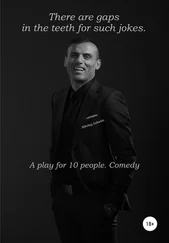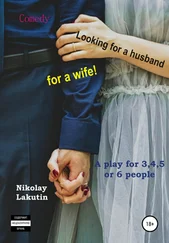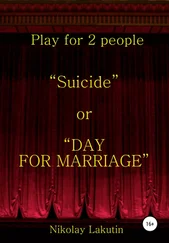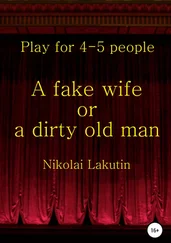I turn slowly, eyes cast down between his front legs, my shoulders round, fingers closed and wrist bent. I reach up and rub him between the eyes. This is his reward for joining with me. Very occasionally the horse is not ready for Join-Up and returns to the flight mode and I have to repeat the process. Usually, however, after a few seconds of rubbing, I walk away and the horse will follow me. I call this Follow-Up. I can literally walk a serpentine pattern in the round pen and the horse is happy to follow close to my shoulder. I stop and turn slowly to stroke him once again, reaffirming our new relationship. Soon we will be partners doing great things.
If all learning is 0-10, then the most important part of learning is 0-1. Join-Up and Follow-Up represent the 0-1 phase. Once I have my horse traveling on a positive path, then all I have to do is reward him for his positive actions and put him to work if he does something negative. For the horse, work is running away from a predator. (The horse is at rest when he is peacefully grazing and must flee when danger is near in order to survive. However, it’s also important to note that in order for the horse to maintain fitness he plays and runs with others.)
Once the horse is on that positive path, the balance of the procedure is academic. Before I ask him to accept certain responsibilities, I must earn his trust by showing him I am not a predator. To that end, we work our way through a series of goals. One is to massage with both hands those areas most often attacked by predators—high on the back and low into the soft flanks. I stroke the horse and then walk away, so that he becomes aware that I have no agenda to cause him pain. I pick up and put down each of his feet, then once more walk away to achieve the same result. After that come the saddle pad, saddle, bridle and rider.
If he says no to the saddle, he goes back to work, which means I gently but firmly push him away from me and require him to run around the perimeter of the round pen once more. The same goes for the bit and the other goals I choose for the horse. Often, placing the bit in his mouth causes the horse to forget about the saddle and think about this new item of tack—it causes a diversion. (Such a diversionary tactic can, we all know, be useful in dealing with reluctant children. If they are focused on a negative problem, then diverting their attention to something else is often a swift and effective way of turning a negative situation into a positive one.)
At no time is there a need to inflict pain or use violence. It will only cause the horse to want to fight me and is, without any question, counterproductive.
At this point, I have essentially accomplished my aim to have the horse accept the saddle, bridle and rider. The horse is not traumatized and elects to stay with me. And to my mind, this is the secret of true leadership. An effective leader must create a situation whereby people choose to stay with him or her rather than go away.
•
There are clear parallels between the procedure I describe above and certain aspects of human communication. With horses the methods are physical; with humans they are psychological. But they are both rooted in psychology and the results are the same phenomenon of acceptance, which will be predictable, discernible and effective.
First impressions are perhaps the most important messages we convey. There is never a second chance to make a first impression and the importance of the manner of a greeting can never be overstated. We humans can tell much from a handshake. Does it have a feeling of welcome and warmth or the lack of it? Rubbing the horse on the forehead I believe to be quite similar to the human handshake. People seem to be most comfortable after a handshake when they remain eye to eye and begin to communicate. Horses, on the other hand, do not require eye contact in this situation and are happiest when the human walks away from them immediately after rubbing the forehead. The horse will generally follow the human being at this point. Predators do not ordinarily walk away from prey animals. When I rub the forehead of my equine student and then walk away from him I am conveying the message that I am not acting predatorily. Touch and connection are established, however briefly, at this point. This welcome gives confidence to each party about the other’s intentions. An embrace, too, can be such a reward. A hug is a wonderful reward for friendship given and establishes its continuance.
Eyes on eyes, shoulders square and encouraging the horse to go away is the same as allowing people to consider their options and recognize their mutual needs. Generally eye-to-eye contact between people implies communication is going to follow.
It can, however, also be a hostile gesture. The piercing eye-to-eye contact of the predator and prey is aggressive and implies intent to attack. A man was in a canteen one day, his lunch on his tray, when he was suddenly punched in the eye by a complete stranger. The man next to him was horrified and offered a helping hand. As they sat down together the man who had been attacked tried to piece together the reason for the assault. He told his newfound friend that the stranger caught his eye because he looked exactly like the man who had robbed him in the street just a week earlier. “I must have looked at him with subconscious aggression in my eyes without realizing it,” he said thoughtfully.
My eye-to-eye contact with the horse communicates my desire for the animal to go away. I establish a working alliance and a flow of conversation only after the horse communicates a request for cooperation. Using the language of Equus, I keep the conversation alive as I create an environment for learning. If I execute true to the concepts of Join-Up I will soon establish trust. Ambivalence should not be viewed as resistance, but as a request for time to think over the proposal currently being offered. At no time should the trainer use force to establish leadership to achieve his or her aims.
When the horse turns his nearest ear toward me he is paying close attention to what I am saying. It is his first offering of respect during this act of communication.
Coming closer to me in the center of the circle is the equivalent of a person watching me closely during a conversation, and appearing to be keenly aware of what I am saying.
Licking and chewing, another part of the wordless conversation between horse and man, also has a broad connection to human communication. When the horse is still suckling from his mother, he moves his mouth in a unique manner, quite similar to the movements of a human baby. Once the horse has learned to eat grass and hay, this changes to a licking and chewing motion. Don’t we humans place great importance on sharing a meal with someone with whom we wish to communicate? There is a great deal of meaning in this. “Let’s have lunch together,” is very different from, “Let’s spend thirty minutes in my office.” Going out to dinner is another level altogether. It metaphorically shows your soft underside and builds an environment of trust. After my first meeting with Queen Elizabeth many people asked me if I had dined with her. It was surprising to me at the time, but it made me acutely aware of how important most people feel it is to have shared a meal with someone. There is a subconscious understanding that sharing food suggests a closer association. Horses understand their own vulnerability while eating, and so that activity is reserved for a time when they are in the presence of those they trust.
When the horse drops his head and trots along bouncing it near the soil, he is acting out a very similar gesture to that of bowing in traditional Japanese culture: the person who achieves the lower position in this gesture of greeting is in fact asking the other to lead the conversation. This is virtually a direct translation of what the horse is saying: “Please suggest the agenda for this meeting. I don’t necessarily want to be subservient to you, but one of us has to play the lead role and I would like it to be you.”
Читать дальше












